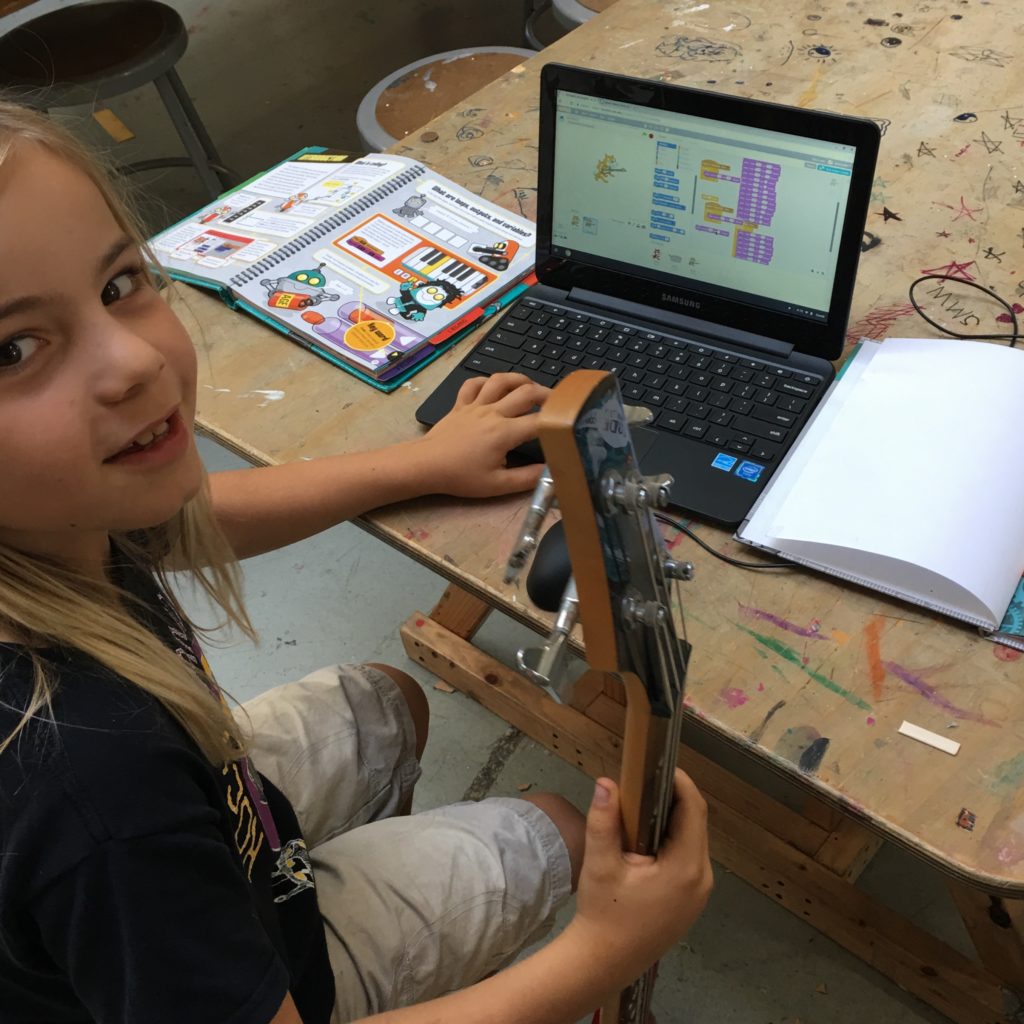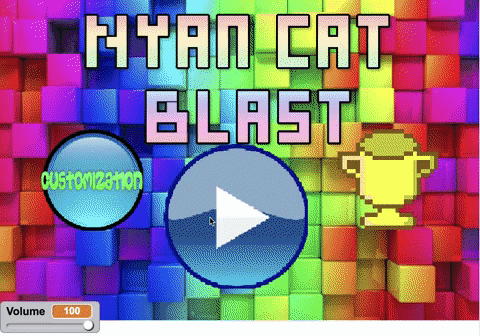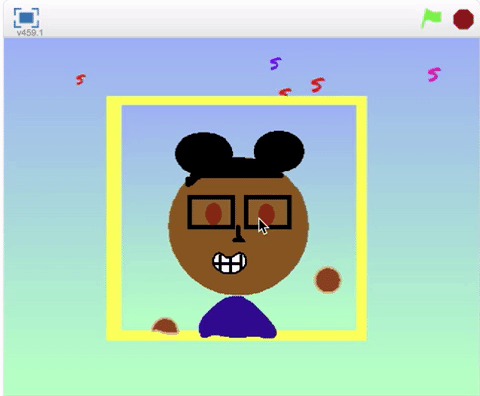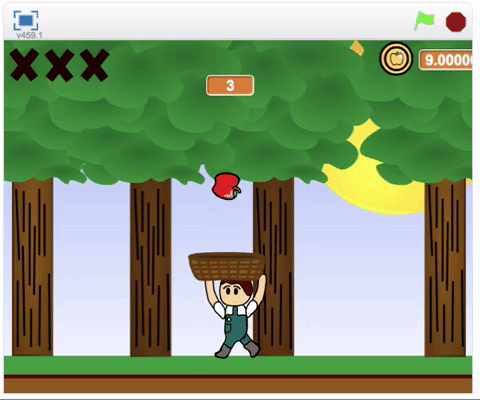BWX Scratchers in Action
 In After Care this year, we have been exploring different ways we can use computer code to create visual art, tell stories, invent new things, and share our passions with other people. One tool we've enjoyed using is the Scratch visual programming language. Developed at the MIT Media Lab, Scratch provides a safe, fun online community for programmers of all ages and ability levels to upload their projects and learn from each other's work. Coding in Scratch requires users to snap color-coded blocks together so it feels familiar to anyone who has worked with Legos. Every project on Scratch can be opened up and remixed so users can iterate on each others' ideas and learn new techniques. In his book Lifelong Kindergarten, Mitch Resnick writes about the genesis of Scratch and how its development was informed by what he calls "the Four P's of Creative Learning."
In After Care this year, we have been exploring different ways we can use computer code to create visual art, tell stories, invent new things, and share our passions with other people. One tool we've enjoyed using is the Scratch visual programming language. Developed at the MIT Media Lab, Scratch provides a safe, fun online community for programmers of all ages and ability levels to upload their projects and learn from each other's work. Coding in Scratch requires users to snap color-coded blocks together so it feels familiar to anyone who has worked with Legos. Every project on Scratch can be opened up and remixed so users can iterate on each others' ideas and learn new techniques. In his book Lifelong Kindergarten, Mitch Resnick writes about the genesis of Scratch and how its development was informed by what he calls "the Four P's of Creative Learning."
-
PROJECTS. Creating projects is the central activity in the Scratch community.
-
PASSION. When people work on projects they care about, they're willing to work longer and harder. Because Scratch supports many different types of projects (games, stories, animations, and more), everyone can work on projects they care about.
-
PEERS. Creativity is a social process with people collaborating, sharing, and building on another's work.
-
PLAY. Scratch is designed to support playful experimentation as a pathway to creativity, encouraging young people to take risks and try new things.
This framework maps perfectly to the educational environment we try to cultivate at Brightworks (which might be why our school was featured as a case study later in the book) so it's no surprise that our kids have started developing a diverse range of impressive projects...

 If you're interested in learning more about how Brightworks Scratch projects are developing, check out the new Brightworks Scratch Studio curated by Ronan Underwood.
If you're interested in learning more about how Brightworks Scratch projects are developing, check out the new Brightworks Scratch Studio curated by Ronan Underwood.
